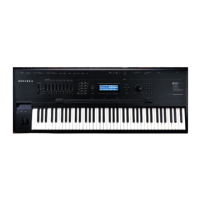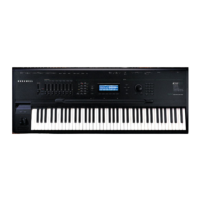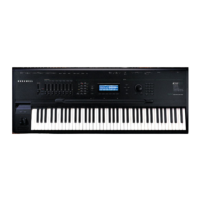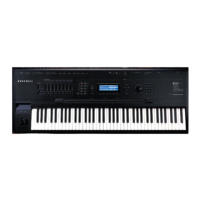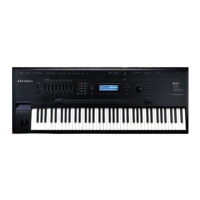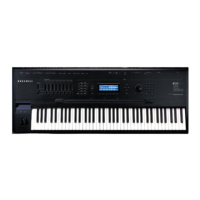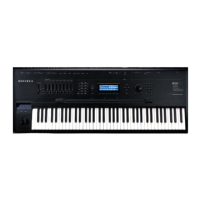Sampling with the K2000
Using the Digital Outputs
2-7
does not appear when sampling digitally. Any monitoring you wish to do must be done from
the sample source.
Cable
Set the Cable parameter to a value of Coaxial or Optical, depending on the type of cable you’re
using. Many consumer products with digital output provide an optical jack. There is a small
plug covering the K2000’s optical input; this plug must be removed before you can connect the
optical cable to the K2000. The plug should be replaced whenever the optical input is not in use.
If you plan to use a coaxial cable, select a value of Coaxial for the Cable parameter. If you’re
sampling from a consumer product like a CD player, you’ll probably need to get an adaptor, or a
cable with an RCA fitting on one end and an XLR (male) fitting on the K2000 end. Some
professional products have an XLR fitting for their outputs, so an ordinary microphone cable
will be suitable in most cases. Longer cables can cause signal loss, however, so if you need a long
cable, you may need to get a special cable designed for digital information transfers.
Format
Use the Format parameter to tell the K2000 the format of the incoming sample. Most consumer
products use SPDIF (Sony/Philips Digital Interface Format), while most professional machines
use the AES/EBU (Audio Engineering Society/European Broadcast Union) format. Refer to the
owner’s manual of your sample source for information regarding its digital format.
The Mode, Time, and Thresh parameters function for digital sampling just as they do for analog
sampling.
When you begin recording, a box appears in the display that indicates that the K2000 has locked
on to the digital signal. You’ll see the word LOCK, and the rate at which the signal was sampled
will be shown. The K2000 automatically sets itself to this rate. If you don’t see this box, check to
make sure that the signal is getting to the K2000.
The K2000 may not display the rate when you’re using a rate other than the frequently-used
rates of 32, 44.1 or 48 KHz. This is normal, and although the rate may not be displayed, the
K2000 will still lock on to it.
Using the Digital Outputs
The K2000 features digital audio outputs with XLR connectors. There are two points to keep in
mind if you wish to use them. First, the Mode parameter on the Sample mode page must be set
to a value of Analog to enable the digital outputs. Second, the analog input must be
disconnected from any cables.
If you have a cable connected to the analog input, that input will be routed to the digital
outputs. This effectively makes the K2000 into an analog-to-digital convertor, which can be very
useful.

